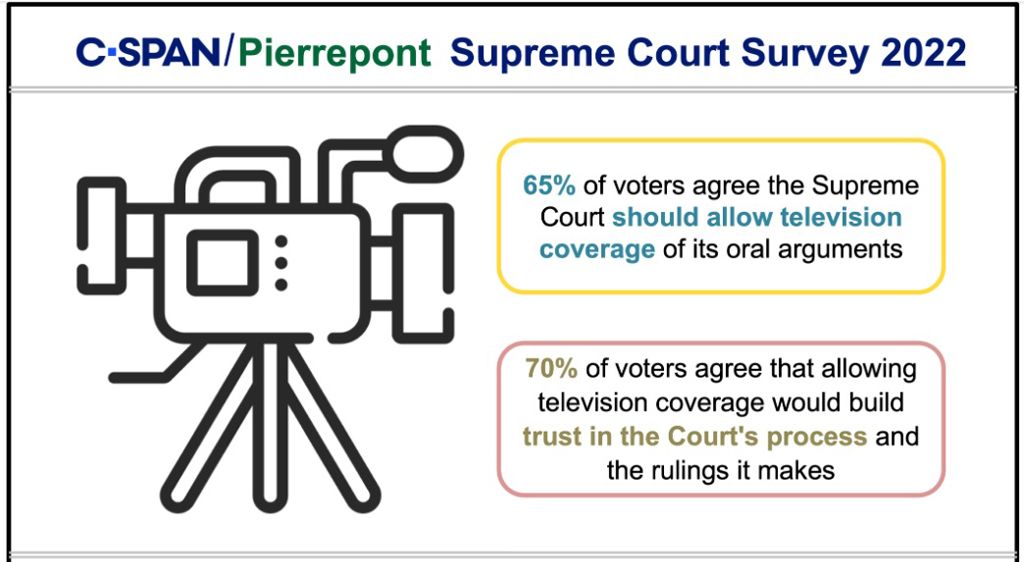C-SPAN Survey: Majority Wants Cameras in Supreme Court
Said it would help build trust

A strong majority of respondents to a new poll said the Supreme Court should allow TV coverage of its oral arguments.
That is according to the survey from Pierrepont Analytics commissioned by C-SPAN, which has long advocated for video in the High Court. C-SPAN's suite of public affairs networks has demonstrated the value of television in the political process and the ability to do it unobtrusively.
But an even larger majority (70%) of respondents said that allowing such coverage would build trust in the court's process and rulings. The survey suggests building such trust, if that is the result of cameras in the court, is that while 84% of voters say the court's decisions affect their lives, only 29% say the court is transparent about how cases are decided, while 72% who said they trust the Federal government less than they used to said allowing cameras would build trust.
Also: Cameras in the Court Bill Reintroduced
More than half (54%) of the respondents knew that the Supreme Court had been providing live audio of those arguments during the pandemic, but the 46% who did signaled they had been listening. Of those, 48% said it had given them a more positive view of the court, 22% said more negative, 26% said neither and 3% did not know.
As the Senate Judiciary Committee prepares to hold hearings on the latest Supreme Court nominee, Judge Kentanji Brown Jackson, a plurality of respondents (42%) said that televised hearings on nominees were an "effective and fair" way of deciding who should sit on the court, with 24% saying no, 16% saying it was neither effective nor ineffective, and 18% saying they didn't know.
Pierrepont conducted the survey among 1,011 likely U.S. voters March 3-6. The margin of error is plus or minus 3.1% at a 95% confidence level.
Congress has failed to pass cameras in the court laws on numerous occasions, in part due to the opposition of some Justices and the separation of powers issue of Congress telling the judiciary what to do, though those laws have generally given the judges a veto over coverage on a case-by-case basis.
A number of Justices have been reluctant to allow video, afraid it would be taken out of context and repackaged in snippets that would distort the process.
But others have argued it would be a good thing. Then Supreme Court nominee now justice Elena Kagan said during her televised (by C-SPAN) confirmation hearing that she thought it would be "a great thing for the institution and a great thing for the American people." ■
Multichannel Newsletter
The smarter way to stay on top of the multichannel video marketplace. Sign up below.
Contributing editor John Eggerton has been an editor and/or writer on media regulation, legislation and policy for over four decades, including covering the FCC, FTC, Congress, the major media trade associations, and the federal courts. In addition to Multichannel News and Broadcasting + Cable, his work has appeared in Radio World, TV Technology, TV Fax, This Week in Consumer Electronics, Variety and the Encyclopedia Britannica.










